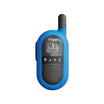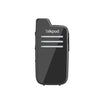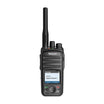While voice is using the first time slot then the second time-slot can, in a TDMA system, be used for transmitting application data such as text messaging or location data in parallel. This is useful, for example, in dispatch systems that provide both verbal and visual dispatch instructions. This is enhanced data capability is becoming increasingly important in data rich environments.
The future roadmap for two-slot TDMA applications includes the ability to temporarily combine both slots to effectively double the data rate to 9.6 kb/s, or to use both slots together to enable full-duplex, phone call like, private calls. FDMA radios cannot deliver these capabilities without the expense of adding extra transceivers and using additional licensed channels. This is because in a single 6.25 kHz FDMA channel there is one communication path; only person can talk, but not two, or you can transmit voice or data, but not both and the data rate is limited to the 4.8 kb/s that can be squeezed down a single 6.25 kHz channel.
The future roadmap for two-slot TDMA applications includes the ability to temporarily combine both slots to effectively double the data rate to 9.6 kb/s, or to use both slots together to enable full-duplex, phone call like, private calls. FDMA radios cannot deliver these capabilities without the expense of adding extra transceivers and using additional licensed channels. This is because in a single 6.25 kHz FDMA channel there is one communication path; only person can talk, but not two, or you can transmit voice or data, but not both and the data rate is limited to the 4.8 kb/s that can be squeezed down a single 6.25 kHz channel.









































